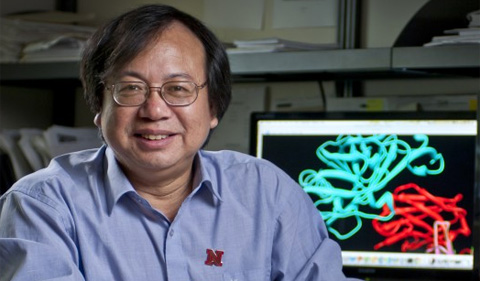Ohio University’s Chemistry and Biochemistry Colloquium Series presents Dr. Don Kuehl on “The Concept of Spectral Accuracy in Mass Spectrometry and its Application to Compound ID and Mixture Decomposition” on Monday, Oct. 24, at 4:10 p.m., in Clippinger Laboratories Room 194.

Dr. Don Kuehl
Kuehl is Vice President of Marketing and Development at Cerno BioScience.
Abstract: Mass Spectrometry (MS) is perhaps the only analytical measurement for which the theoretical response (spectral profile) of an analyte can be accurately calculated based solely on first principles. This is possible because we know both the mass of a given ion, and the isotope distribution to a very high degree of accuracy. Knowing the exact spectral profile of an analyte can provide a powerful tool for the identification of unknown compounds and/or provide the ability to deconvolve unresolved mixtures even on low resolution instruments (e.g. quadrupole based instruments). Unfortunately, due to the drift and imperfections of the electromagnetic “lenses” used in mass spectrometry, it has previously been very difficult to take advantage of these accurate spectral profiles. Instead, the mass positions of the fully resolved isotope peaks alone have traditionally been used for analysis and identification which typically requires the use of more expensive high resolution MS systems.
In this talk, we will present a new approach to MS calibration which allows for correcting the spectral profiles by calibrating the MS peak shape to a mathematically defined line shape. Once the line shapes are corrected, it is a straight forward process to accurately match theoretically calculated spectral profiles to the measured profiles. This concept of Spectral Accuracy[1] can be used to greatly enhance the ability of both high and low resolution MS in the analysis of pure unknown analytes as well as mixtures. In addition, the calibrated line shape allows for the accurate calculation of mass accuracy even with low resolution systems (e.g. single quad GC/LC), typically to +/- 5 mDa, a factor of 100X improvement over uncalibrated spectra.
An overview of the principles of MS calibration and Spectral Accuracy will be presented and its application to solving problems in environmental, forensic and biological mass spectrometry will be reviewed for both GC/MS and low and high resolution LC/MS.
[1] The Concept of Spectral Accuracy for MS, Yongdong Wang and Ming Gu, Anal. Chem. 2010, 82, 7055-7062.



















Comments